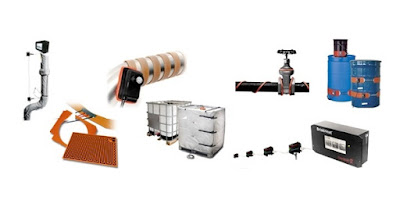 |
Tunable diode laser gas analyzer with retroflector
requires no special aiming and puts the source
and detector on the same side of the pipe.
Courtesy Mettler Toledo |
Gas analysis is an important part of production, quality control, safety, efficiency, or legal compliance in many industrial operations. Reliable and accurate information about the concentration of certain gas components enables operators to properly control processes and regulate output.
A tunable diode laser gas analyzer (TDL) is essentially an application of absorption spectroscopy. The laser light source can be adjusted to the absorption wavelength of the target gas molecule. The light passes through the gas and is collected and measured by a detector. Based upon known properties of the target gas molecule, its concentration can be determined. The technology provides suitable accuracy, delivers real time measurement data, and in many cases requires little maintenance. Of course, applying technology in the field can present unique site specific challenges.
Dust, other particulates, distance related to pipe diameter, pressure, and temperature can impact the instruments ability to deliver reliable measurements. Additionally, installations using opposing emitters and detectors in a "cross pipe" configuration can have difficulty in achieving and maintaining proper alignment. Solutions are at hand for many of these previously intractable applications. Integrating the light source and detector into a single unit with lighter weight and smaller size enables a less complicated installation scenario. There are other adaptions made to the instrument that overcome many of the commonly encountered difficulties when installing a TDL into an existing or new system.
Mettler Toledo, innovator in the TDL field, authored a white paper illustrating some of the installation challenges and how they can be successfully and easily overcome using a properly adapted tunable diode laser gas analyzer. The paper is included below, taking only a few minutes to read. It's well worth the time spent.
Share your process analytical requirements and challenges with
specialists in process analytical solutions, combining your own process knowledge and experience with their product application expertise to reach a successful outcome.














